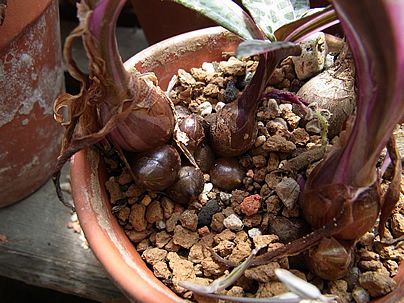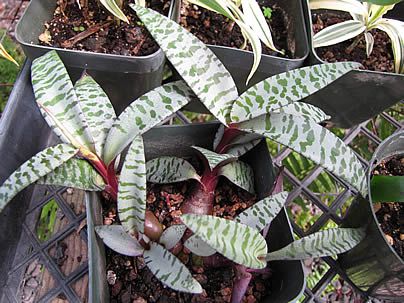The Silver Squill or Wood Hyacinth (Ledebouria socialis) is a bulbous and succulent plant, known for its ornamental foliage and flowering. It originates from the Eastern Cape, a province in South Africa, and is very popular among cactus and succulent collectors. One of the distinct characteristics of this species is that it develops its bulbs above the ground, which is quite uncommon in bulbous plants.
The bulbs are small, teardrop-shaped, and covered with a transparent tunic. Its leaves are lanceolate, arranged in a rosette, varying from green to silver in color, and may be adorned with leopard spots or zebra stripes, depending on the variety. The underside of the leaves is a beautiful violaceous hue, as are the bulbs, except in the “Laxifolia” and “Paucifolia” cultivars, which are simply green.

There is also a “Variegata” form, where the variegation in longitudinal stripes starts from the tunic covering the bulb. During the dry winter, the plant usually goes dormant, losing its leaves and beginning the internal formation of flowers. In early spring, delicate inflorescences appear in racemes, with pendulous bell-shaped flowers in pink with green stripes, and highly recurved sepals. If water supply is maintained regularly during winter, the plant remains vegetative and does not lose its leaves, nor is it stimulated to flower in the next season.
A resilient and intriguing plant, the silver squill forms beautiful arrangements in bowls and planters, which can be made solely with this species, or in combination with other succulent plants. Due to its hardiness and drought resistance, it is suitable for beginner gardeners and even those who are forgetful and negligent, often forgetting to water their plants.
It is also recommended for arid gardens with low water availability. The exotic and wild appearance of the silver squill’s leaves alone is captivating for those who observe it. However, its flowering, so delicate and charming, is a chapter of its own, worthy of a mystical garden, inspired by fairy tales and elves.

The silver squill should be grown in partial shade, in fertile soil enriched with organic matter, well-drained, and watered regularly during the vegetative period. A potting mix suitable for succulents, enriched with garden soil, is ideal. In winter, reduce watering until it is completely suspended.
Only with a period of dormancy in dry soil can the silver squill renew its foliage and produce flowers. If, on the other hand, watering is not suspended, the plant does not lose its leaves and is unlikely to flower. This species can even resist full sun, but its leaves will be small and its growth limited. Similarly, under excessive shade, etiolation occurs, with excessively elongated leaves and weak bulbs. Fertilize during spring and summer.
Propagation is easily done by separating the small bulbs that form around the mother plant. The ideal time to separate the bulbs of the silver squill is after the end of flowering. The bulbs should not be buried, as this could cause them to rot. Plant them lightly embedded in the soil, with the roots facing downwards. Similarly, they do not need to be removed from the pot during the dormancy period, as is common with other bulbous plants.


